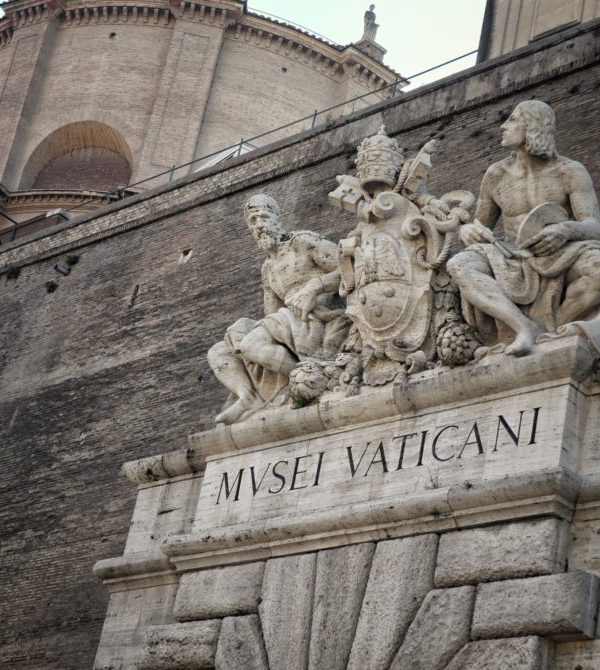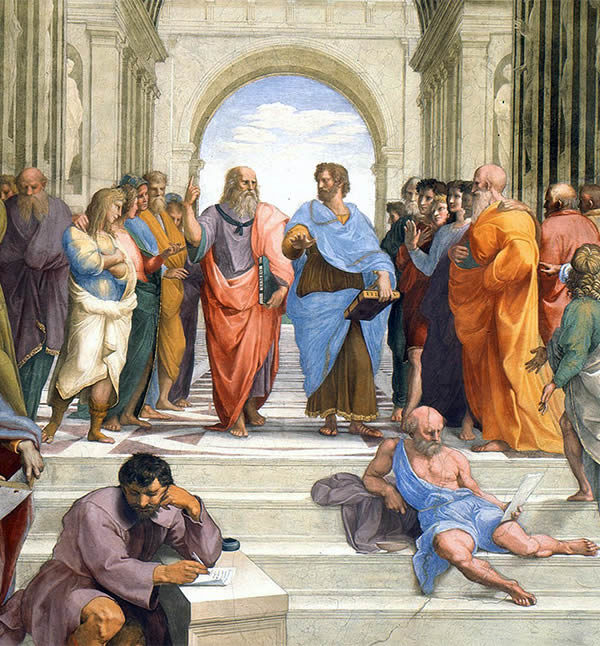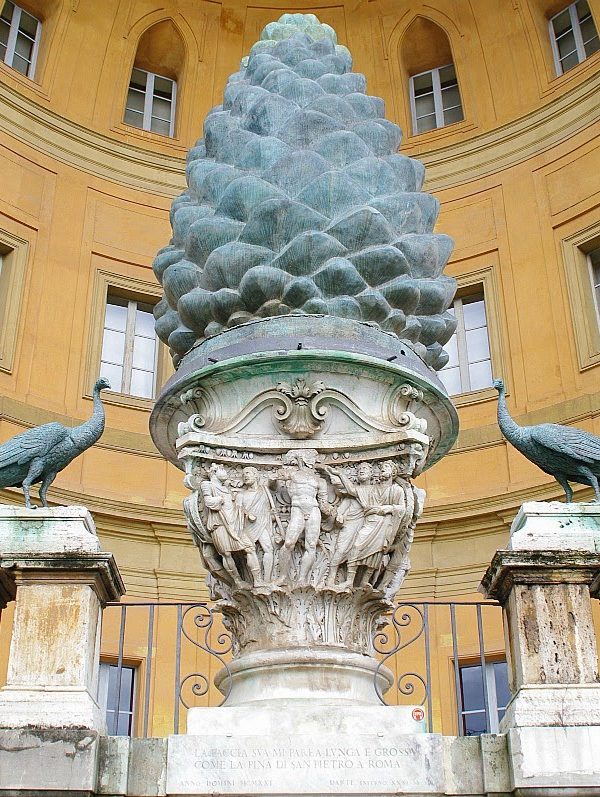It was commissioned by popes Clement XIV (1769-1774) and Pius VI (1775-1799) to collect the most important Greek and Roman masterpieces kept in the Vatican. After passing the Square Vestibule and the room with a splendid marble cup, he entered the Cabinet of the Apoxyomenos, a room that takes its name from a Roman copy of a Greek original in bronze by Lisippo (around 320 BC): it represents an athlete who after having competed cleans the sweat with the strigil, a kind of razor used in antiquity; the gaze is turned away, the body is caught in the moment of relaxation after the victory. From the next room you can see the Scala del Bramante, commissioned by Julius II in 1512 to create a connection between the Palazzetto di Innocenzo VIII (1484-1492) and the city: the helicoidal ramp, built in a square tower, was practicable even on horseback .
We then move on to the Cortile Ottagono, made of this shape by Clement XIV in 1772. Among the best known statues: the Apollo of the Belvedere, a Roman copy of the 2nd century AD. from a Greek original in bronze perhaps by Leochares (330-320 BC), located in the Agora of Athens (the statue of the God of beauty, who perhaps carried a bow in his outstretched arm and had an arrow in his lowered hand, was considered in the period neoclassical example of formal perfection and technical virtuosity and was brought to the Vatican by decision of Julius II); the famous Laocoon group, Roman copy of the 1st century AD from a Greek Greek original of the 2nd century BC, by Hagesandros, Athanadoros and Polydoros, found in Rome on the Esquiline hill in 1506, immediately much admired by Michelangelo, it was purchased by Julius II who placed it in the Vatican (the sculpture represents the Trojan priest Laocoon who, for having warned his fellow citizens of the deception hidden in the wooden horse, a gift from the Greeks, was condemned by Athena’s wrath to die together with his two children, the victim of snakes from the sea); Perseus with the head of Medusa between two Boxers by Antonio Canova (1800-1801).
Adjacent to the courtyard are:
– the Animal Room, which collects statues of Roman animals freely and extensively restored at the end of the eighteenth century.
– the Gallery of Statues, once the open loggia of the Palazzetto of Innocenzo VIII, was transformed into a sculpture gallery in the second half of the eighteenth century. It contains precious Roman statues, some of which are copies of works from the classical Greek period (5th-4th century BC): among them the Apollo “Sauroktonos”, killer of lizard, from an original by Praxiteles (around 350 BC), and the famous Ariadne asleep, Roman copy of the 2nd century AD from an original of the School of Pergamum of the second century BC
– the Sala dei Busti, with portraits mainly of Roman emperors.
– the Cabinet of the Masks, in which the Venus Cnidia is noted, a Roman copy from a Greek original that was in the sanctuary of Knidos; it is also the work of Praxiteles, much admired in antiquity (mid 4th century BC).
– the Sala delle Muse, where statues of Muses and poets are placed, all Roman copies from Greek originals. In the center is the famous Torso del Belvedere, original from the 1st century BC, a work signed by the Athenian sculptor Apollonio. Much admired in the Renaissance and Neoclassicism, the statue shows a powerful and vigorous musculature, perfectly corresponding to Michelangelo’s ideals. The sculpture has recently been identified with the figure of the Greek hero Ajax meditating suicide.
– the Round Room, was built by Michelangelo Simonetti with full neoclassical taste at the end of the eighteenth century. The dome, in fact, with a diameter of 21.60 meters, follows that of the Pantheon. At the center is a large round monolithic porphyry basin, almost five meters wide, coming from the Domus Aurea and located here at the end of the eighteenth century.
Of great suggestion is the gilded bronze Hercules of the late second century AD. found near the Pompeo Theater, and the 3rd century mosaic from the thermal baths of Otricoli (a town in the Umbria region).
– the Greek Cross Hall, in which the central mosaic stands out, a work of the third century AD. from Tusculum and two colossal red porphyry sarcophagi: the one on the left is from Sant’Elena (4th century), mother of Constantine (306-337), from the mausoleum dedicated to her on the via Labicana; the one on the right is from Constantine, daughter of Emperor Constantine, from the church of Santa Costanza on via Nomentana.
Taking up the Scala Simonetti, you can visit the other rooms of the Palazzetto di Innocenzo VIII (1484-1492), where the Etruscan Museum is housed, or continue to the Raphael Rooms and the Sistine Chapel.



